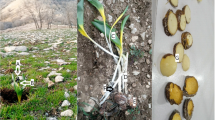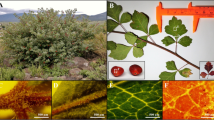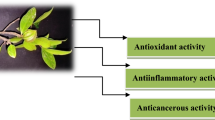Abstract
Objective
Curcumin is the most important active component of the turmeric rhizomes (Curcuma longa L). Over the past few decades, research on curcumin and its analogues has increased due to their antioxidant, anti-inflammatory and anticancer activities. This study involved the synthesis of a curcumin benzothiazole analogue and evaluation of the compound's antioxidant properties, in vitro anticancer activity, and in vivo toxicity.
Methods
An analogue of curcumin benzothiazole was synthesized, and the antioxidant activity was assessed using the ABTS radical scavenging assay. The MTT assay was used to assess the cytotoxic activity against the lung cancer A549, cervical cancer HELA, and breast cancer MDA MB 231 cell lines. According to OECD guidelines, acute toxicity was assessed in albino wistar rats.
Results
Strong antioxidant activity was shown by the curcumin benzothiazole derivative. The curcumin benzothiazole analogue demonstrated the highest and most potent cytotoxic activity in the MTT assay when tested against MDA MB 231 breast cancer cells, at 88.60 ± 0.26%. This was followed by moderate cytotoxicity against A549 lung cancer cells and HELA cancer cell lines. According to the OECD 423 recommendations, rats were fed the curcumin benzothiazole analogue at doses of 2000 mg/kg and 300 mg/kg during an acute toxicity experiment. Although no death was discovered at either level, kidney tubular necrosis was observed at the dose of 2000 mg/kg, and albino wistar rats were found to be unaffected by the 300 mg/kg dose.
Conclusion
According to the findings of this investigation, in vitro experiments showed that the curcumin benzothiazole analogue was a very potent antioxidant and anti-breast cancer candidate. Testing on albino wistar rats revealed that the substance was safe up to levels of 300 mg/kg.
Graphical Abstract













Similar content being viewed by others
References
Xu YX, Pindolia KR, Janakiraman N, Noth CJ, Chapman RA, Gautam SC (1997) Curcumin, a compound with anti-inflammatory and antioxidant properties, down-regulates chemokine expression in bone marrow stromal cells. Exp Hematol 25(5):413–422
Selvam C, Prabu SL, Jordan BC, Purushothaman Y, Umamaheswari A, Hosseini Zare MS, Thilagavathi R (2019) Molecular mechanisms of curcumin and its analogs in colon cancer prevention and treatment. Life Sci 239:117032
Wang L, Wang C, Tao Z, Zhao L, Zhu Z, Wu W, He Y, Chen H, Zheng B, Huang X, Yu Y, Yang L, Liang G, Cui R, Chen T (2019) Curcumin derivative WZ35 inhibits tumor cell growth via ROS-YAP-JNK signaling pathway in breast cancer. J Exp Clin Cancer Res 38(1):460
Meiyanto E, Husnaa U, Kastian RF, Putri H, Larasati YA, Khumaira A, Pamungkas DDP, Jenie RI, Kawaichi M, Lestari B, Yokoyama T, Kato JY (2021) The target differences of anti-tumorigenesis potential of curcumin and its analogs against HER-2 positive and triple-negative breast cancer cells. Adv Pharm Bull 11(1):188–196
Nirgude S, Mahadeva R, Koroth J, Kumar S, Kumar KSS, Gopalakrishnan V, Karki SSS, Choudhary B (2020) ST09, a novel curcumin derivative, blocks cell migration by inhibiting matrix metalloproteases in breast cancer cells and inhibits tumor progression in EAC mouse tumor models. Molecules 25(19):4499
Hosseini Zare MS, Sarhadi M, Zarei M, Thilagavathi R, Selvam C (2021) Synergistic effects of curcumin and its analogs with other bioactive compounds: a comprehensive review. Eur J Med Chem 210:113072
Forero-Doria O, Guzman L, Jimenez-Aspee F, Echeverria J, Wehinger S, Valenzuela C, Araya-Maturana R, Martinez-Cifuentes M (2022) An in vitro and in silico study of antioxidant properties of curcuminoid n-alkylpyridinium salts: initial assessment of their antitumoral properties. Antioxidants (Basel) 11(6):1104
Linder B, Kohler LHF, Reisbeck L, Menger D, Subramaniam D, Herold Mende C, Anant S, Schobert R, Biersack B, Kogel D (2021) A new pentafluorothio-substituted curcuminoid with superior antitumor activity. Biomolecules 11(7):947
Panda SS, Tran QL, Rajpurohit P, Pillai GG, Thomas JS, Bridges AE, Capito JE, Thangaraju M, Lokeshwar BL (2022) Design, synthesis, and molecular docking studies of curcumin hybrid conjugates as potential therapeutics for breast cancer. Pharmaceuticals (Basel) 15(4):451
Aggarwal ML, Chacko KM, Kuruvilla BT (2016) Systematic and comprehensive investigation of the toxicity of curcuminoid-essential oil complex: a bioavailable turmeric formulation. Mol Med Rep 13(1):592–604
Selvam C, Jachak SM, Thilagavathi R, Chakraborti AK (2005) Design, synthesis, biological evaluation, and molecular docking of curcumin analogues as antioxidant, cyclooxygenase inhibitory and anti-inflammatory agents. Bioorg Med Chem Lett 15(7):1793–1797
Pham VTB, Nguyen TV, Nguyen HV, Nguyen TT, Hoang MH (2020) Curcuminoids versus pyrazole-modified analogues: synthesis and cytotoxicity against HepG2 cancer cell line. Chem Sel 5:11681–12116. https://doi.org/10.1002/slct.2020030
Kandagalla S, Sharath BS, Rudresh Bharath B, Hani U, Manjunatha H (2017) Molecular docking analysis of curcumin analogues against kinase domain of ALK5. In: Silico pharmacol 5(1):15
Jordan BC, Mock CD, Thilagavathi R, Selvam C (2016) Molecular mechanisms of curcumin and its semisynthetic analogues in prostate cancer prevention and treatment. Life Sci 152:135–144
Zheng QT, Yang ZH, Yu LY, Ren YY, Huang QX, Liu Q, Yu Ma X, Chen ZK, Wang ZB, Zheng X (2016) Synthesis and antioxidant activity of curcumin analogs. J Asian Nat Prod Res 5:489–503
Li Q, Chen J, Luo S, Xu J, Huang Q, Liu T (2015) Synthesis and assessment of the antioxidant and antitumour properties of asymmetric curcumin analogues. Eur J Med Chem 93:461–469
Archana P, Ravindra KG, Srivastava R (2011) Curcumin—the yellow magic. Asian J Appl Sci 4(4):343–354
Patel SS, Acharya A, Ray RS, Agrawal R, Raghuwanshi R, Jain P (2020) Cellular and molecular mechanisms of curcumin in prevention and treatment of disease. Crit Rev Food Sci Nutr 60(6):887–939
Worldwide cancer data (2020) World cancer research fund international. https://www.wcrf.org/cancer-trends/worldwide-cancer-data/2020
Gillet JP, Varma S, Gottesman MM (2013) The clinical relevance of cancer cell lines. J Natl Cancer Inst 105(7):452–458
Subha D, Geetha N (2017) Evaluation of acute toxicity of the methanolic extract of Tanacetum parthenium L. in albino Wistar rats. J Sci Innov Res 6(3):113–115
Jordan BC, Kumar B, Thilagavathi R, Yadhav A, Kumar P, Selvam C (2018) Synthesis, evaluation of cytotoxic properties of promising curcumin analogues and investigation of possible molecular mechanisms. Chem biol drug des 91(1):332–337
Waheed A, Bibi Y, Nisa S, Chaudhary FM, Sahreen S, Zia M (2013) Inhibition of human breast and colorectal cancer cells by Viburnum foetens L. extracts in vitro. Asian Pac J Trop Dis 3(1):32–36
Muhammad HL, Kabiru AY, Busari MB, Mann A, Abdullah AS, Usman AT, Adamu U (2016) Acute oral toxicity study of ethanol extract of Ceiba pentandra leaves as a glucose lowering agent in diabetic rats. J Acute Dis 5(3):237–243
Rodriguez Lara A, Mesa MD, Aragon Vela J, Casuso RA, Vazquez CC, Zuniga JM, Huertas JR (2019) Acute/subacute and sub-chronic oral toxicity of a hidroxytyrosol-rich virgin olive oil extract. Nutrients 11(9):2133
Munoz MNM, Alvarado UG, Reyes JIL, Watanabe K (2021) Acute oral toxicity assessment of ethanolic extracts of Antidesma bunius (L.) Spreng fruits in mice. Toxicol Rep 8:1289–1299
Subhasree B, Baskar R, Laxmi Keerthana R, Lijina Susan R, Rajasekaran P (2009) Evaluation of antioxidant potential in selected green leafy vegetables. Food Chem 115(4):1213–1220
Bezivin C, Tomasi S, Lohezic-Le Devehat F, Boustie J (2003) Cytotoxic activity of some lichen extracts on murine and human cancer cell lines. Phytomedicine 10(6–7):499–503
OECD guideline for testing of chemicals -423-Acute toxicity-Acute oral toxicity -17th December 2001
Sarwar R, Farooq U, Khan A, Niaz S, Khan S, Khan A, Rauf A, Bahadar H, Uddin R (2015) Evaluation of antioxidant, free radical scavenging, and antimicrobial activity of Quercus incana Roxb. Front pharmacol 6:277
Alelign T, Chalchisa D, Fekadu N, Solomon D, Sisay T, Debella A, Petros B (2020) Evaluation of acute and sub-acute toxicity of selected traditional anti urolithiatic medicinal plant extracts in Wistar albino rats. Toxicol Rep 7:1356–1365
Acknowledgements
The authors are grateful to the Karpagam Academy of Higher Education for providing the necessary facilities to perform this research. This project did not receive any specific grant from funding agencies
Author information
Authors and Affiliations
Corresponding author
Ethics declarations
Conflict of interest
The authors declare that there are no conflicts of interest.
Ethical approval
This article does not include experiments using human subjects, and the institutional animal ethics committee at the Karpagam Academy of Higher Education in Coimbatore, Tamil Nadu, India, gave its approval for the animal studies (Approval no: KAHE/IAEC/2020/30-12/001).
Rights and permissions
Springer Nature or its licensor (e.g. a society or other partner) holds exclusive rights to this article under a publishing agreement with the author(s) or other rightsholder(s); author self-archiving of the accepted manuscript version of this article is solely governed by the terms of such publishing agreement and applicable law.
About this article
Cite this article
Kannan, M., Thilagavathi, R. & Selvam, C. Antioxidant, anticancer, and toxicological evaluation of semi-synthetic curcumin benzothiazole analogue. Toxicol. Environ. Health Sci. 15, 85–97 (2023). https://doi.org/10.1007/s13530-022-00164-3
Accepted:
Published:
Issue Date:
DOI: https://doi.org/10.1007/s13530-022-00164-3




